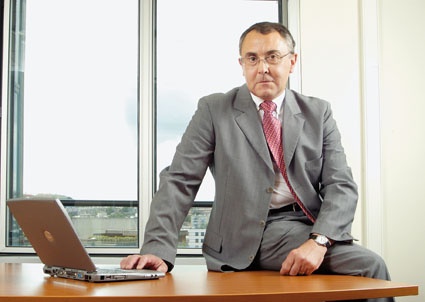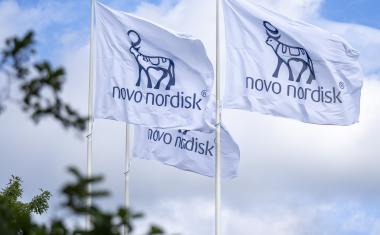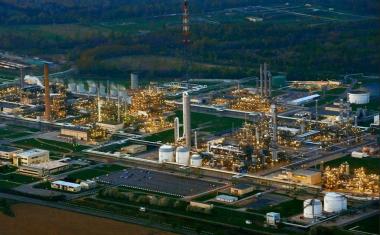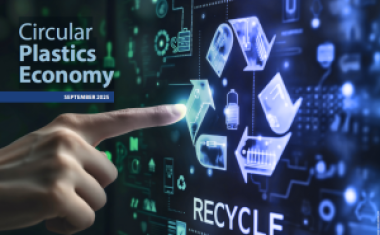Capturing The Sun: Interview with Pierre Chanoine, Arkema


Prospect - Through reorganizations, divestments, acquisitions, targeted investments, and a committed innovation drive, France's chemicals producer Arkema has steadily kept up its transformation since 2006, the year of its stock market listing. Today, the company has consolidated most of its core businesses and boasts sound financial strength to cope with the challenging economic environment. Ana Wood asked Pierre Chanoine, Executive Vice President for Performance Products, one of Arkema's three business segments, to review the key phases in Arkema's evolution, together with what constitutes its assets.
CHEManager Europe: Could you explain Arkema's continuous restructuring strategy?
P. Chanoine: Focusing on productivity has been a main objective since the creation of Arkema. This has been crucial as in 2005 we were losing market shares because we were not competitive compared to our competitors. So we did some selective work, with plenty of support measures, which was necessary in Europe and North America.
Recently, in June, we announced major plans for a reorganization of Methacrylics that will allow Arkema to secure this activity over the long term. This will have an impact on two French plants, namely Carling and Bernouville.
How will Arkema achieve its cost cutting objectives for the 2009 - 2010 period?
P. Chanoine: On the basis of our recent reorganizations announced in 2008 in Vinyls and in G&A procurement in France, and this year in our subsidiary in North America and in the Methacrylics activity in France, I am confident that Arkema will achieve its cost savings objective of €220 million by 2010. For the 2006 - 2008 period, we have already achieved cost savings of €330 million.
I would point out that with a gross operating margin close to 9 % in 2008, in three years we have succeeded in cutting by half the profitability gap between us and other chemicals manufacturers, who on average had an 11.2 % margin at that point in time.
Finally, we must remember that it is thanks to the structural efforts put in place since 2006, in particular the implementation of our ambitious €550 million 5-year cost-cutting plan, we are able to mitigate the effects of today's unprecedented crisis. Quarter after quarter we continue to lower our breakeven point, and now show a very sound financial structure with gearing down to 21 % of shareholders funds.
What restructuring initiatives are taking place specifically in the Performance Products business?
P. Chanoine: The Performance Products segment illustrates our mix strategy - competitiveness, innovation and selective growth. We did restructure our polyamide activity in 2007 and 2008 by optimizing our Marseille and Serquigny sites, and by closing our copolyamide site in Bonn. But we also sold off our Urea Formaldehyde Resins business unit, while carrying out highly targeted acquisitions, like GEO in organic peroxides, and a number of small acquisitions in our Specialty Chemicals subsidiary CECA, which are boosting its surfactant and filter aid portfolios. These reentering operations enable us to consolidate our strategic business units.
What about portfolio expansion?
P. Chanoine: We have seen a large number of product launches in Products Performance Business Segment in the last two years, as we bank a great deal on innovation to develop our portfolio. In line with our decision to expand our range of polymers of renewable origin, we have announced a new transparent polyamide, a flexible polyamide capable of withstanding very high temperatures, and a partly bio-sourced thermoplastic elastomer, amongst others. And we were the first to market a surfactant-free PVDF. We have strong ambitions for the development of ultra performance materials, where we aim to multiply our sales tenfold to €250 million within five years.
To pursue our development strategy in ultra high performance materials, we decided to buy the American company OPM earlier this year, which markets polyether ketone ketone (PEKK), a polymer with outstanding properties: it is the only polymer on the market today capable of withstanding very high temperatures, of the order of 260 °C, while boasting unrivalled resistance to chemicals and abrasion.
How is OPM being integrated into Arkema's business units?
P. Chanoine: We shall be keeping the small OPM organization in the U.S., but the company will benefit from our commercial strength: OPM is already present in the field of medical implants and prostheses thanks to bio-compatibility with bone. By joining an international group like Arkema, OPM will be able to target new markets, such as aerospace and oil & gas, which offer a major development potential, in particular in terms of metal substitution.
OPM will also be able to capitalize on our process R&D resources, our objective being to start producing in Europe and the US significant PEKK volumes from next year. We are therefore very confident for this new polymer.
Will there be further acquisitions in 2009 that will add to the Performance Products business segment?
P. Chanoine: We said in 2006 that we would carry out acquisitions representing sales of €500 to 800 million. To date we have carried out divestments amounting to €400 million and acquisitions amounting to €250 million. Ours is therefore a highly selective approach: Arkema is not rolling out the big guns by selling half its portfolio in order to acquire another half. Our approach is to transform our portfolio step by step, and this is beginning to bear fruit.
Our objective is to make acquisitions, irrespective of scale effects, which should bring value to our core business assets, and afford us rapid growth in those sectors we regard as strategic. By optimizing our cash management, we have the means not to miss opportunities for small targeted acquisitions. So we remain open-minded and on the lookout.
You mentioned the launch of new products and this is also true for the Kynar range. What properties make the Kynar polyvinylidene fluoride (PVDF) products so successful?
P. Chanoine: Our PVDF products, sold under the tradename Kynar, have been very well-known in the construction and chemical process industry sectors for almost 40 years. Used as base resins for high-end industrial coatings and paints, they offer outstanding thermal and UV resistance, as well as very good chemical stability.
These performances make them strategic products which we have been placing in new markets in recent years: since 2008, Kynar has been used as a film in the backsheet of photovoltaic panels, competing with PVF film. In barely two years, we have made very significant inroads into this market.
Recently we also developed a new "functionalized" PVDF range, namely Kynar ADX, which can adhere directly, without the need for a primer, onto a variety of materials, including polyamides or PET, metal, or even rubber. The ADX grade allows us to target new applications requiring very good chemical resistance, and/or a longer lifetime, like multilayer pipes for biofuel circuits in cars, or multilayer pipes for the transport of drinking water.
The photovoltaic markets are booming. How important is this market to Arkema's future plans?
P. Chanoine: Since 2001 Arkema has been present in these markets by offering polymers that are perfectly suited to the composition of solar panels. Some of our polymers indeed show promising applications in this sector. This is the case with our EVA resins, which are used to encapsulate the silicon in photovoltaic cells, and our Kynar film which forms the panel's insulating backsheet.
In order to develop these products, Arkema implements a particularly dynamic R&D policy. Our objective is to provide manufacturers in the photovoltaic sector with reliable solutions that are quick and simple to put in place, to help them reduce their production costs while improving the yield of photovoltaic panels.
However, technologies in this sector are changing at a fast pace, and we intend to be present in next-generation solar panels. Our R&D is already very much involved in the new generation, called "flexible thin layer", for which we have developed new products, one of which for encapsulating thin silicon layers and another for replacing the glass sheet, as front sheet. We shall be presenting these innovations in September at the 24th Photovoltaic's Conference and Exhibition in Hamburg, Germany.
Arkema has been producing technical polymers from bio-based resources for a long time. What are your objectives with these bio-based polymers?
P. Chanoine: The inevitable depletion of fossil resources coupled with customer demand for ultra high performance products in the sports, electronics, automotive, medical equipment and textile sectors, have led us to develop in particular our Rilsan PA 11, made from castor oil, which boasts technical assets that PA12 does not have. Arkema's bioplastics rise to the ecological and technological challenge.
Over and above bio-plastics, we are developing other product ranges from vegetable sources, for example additives used to lower the application temperature of road bitumen, or a new rubber product based on vegetable oil which features an incredible self-healing characteristic.
Our various products derived from renewable raw materials today account for some 5 % of our sales, a share which we intend to double by 2012. Arkema's growth will therefore be sustained without any doubt by the development of our products of vegetable origin in the years to come.
most read

BASF Sells Majority Stake in Coatings Business
BASF sells a majority stake in its coatings business to the investor Carlyle.

Novo Nordisk to Cut 9,000 Jobs Globally in Major Restructuring
Novo Nordisk announced a global workforce reduction of approximately 9,000 positions to streamline operations and reinvest DKK 8 billion (€1 billion) in growth opportunities for diabetes and obesity treatments.

Ratcliffe: Chemical Industry in Europe at a Tipping Point
Ineos CEO Ineos calls on European politicians to save the chemical industry.

Merck Acquires Chromatography Business from JSR Life Sciences
Merck to acquire the chromatography business of JSR Life Sciences, a leading provider of CDMO services, preclinical and translational clinical research, and bioprocessing solutions.

Dow to Shut Down Three Upstream European Assets
Building on the April 2025 announcement, Dow will take actions across its three operating segments to support European profitability, resulting in the closure of sites in Germany and the UK.











